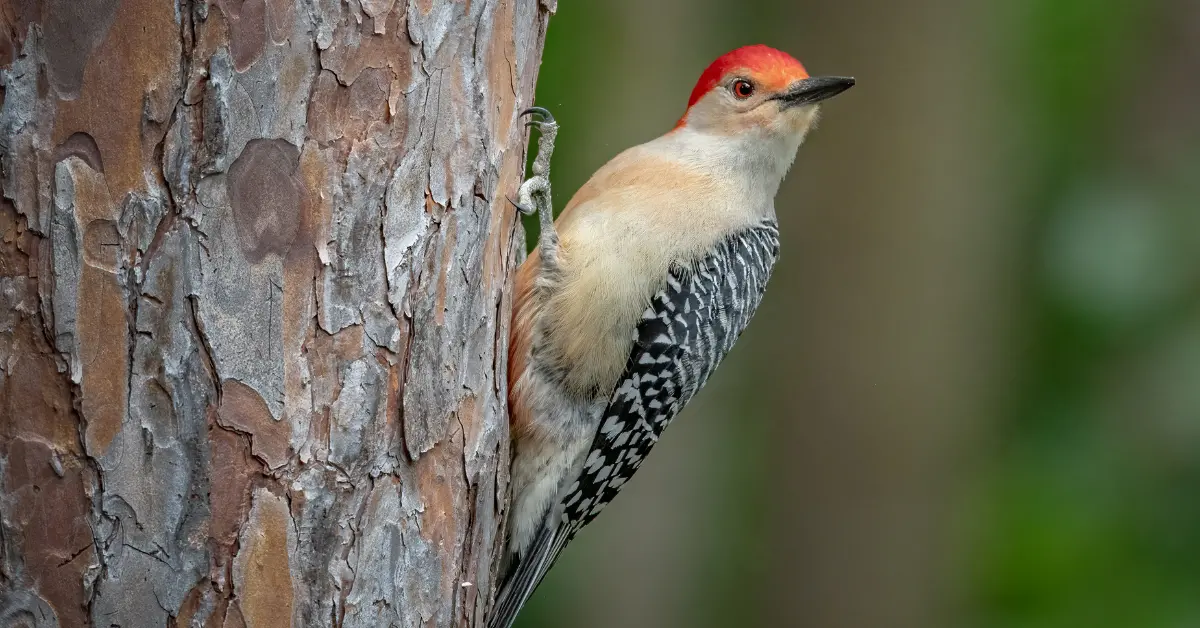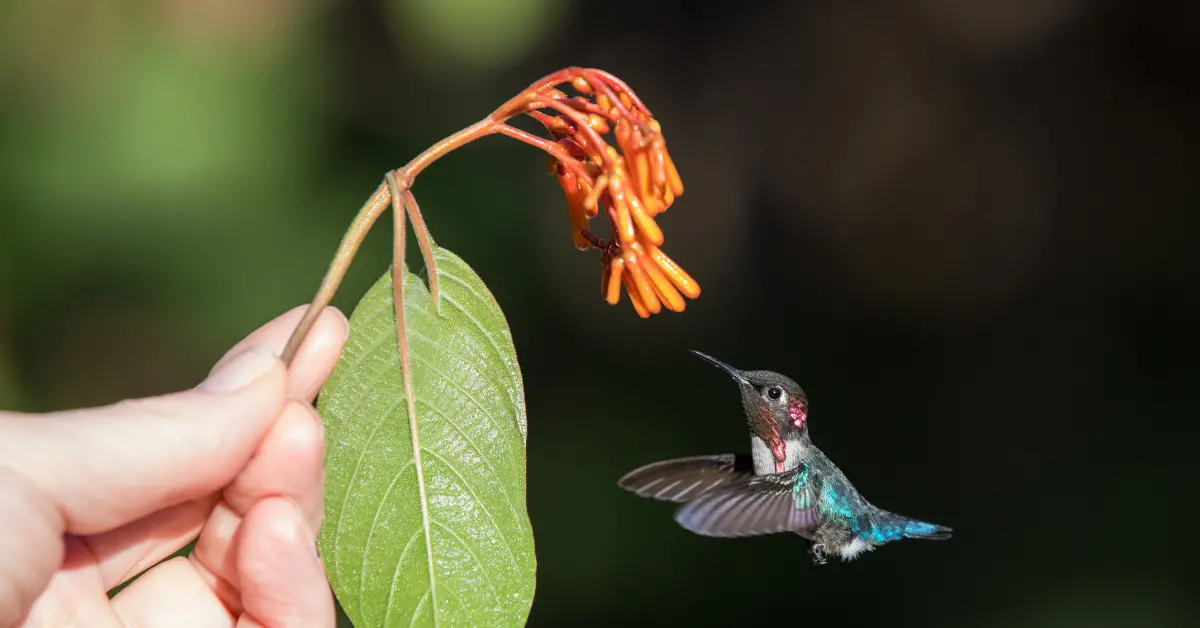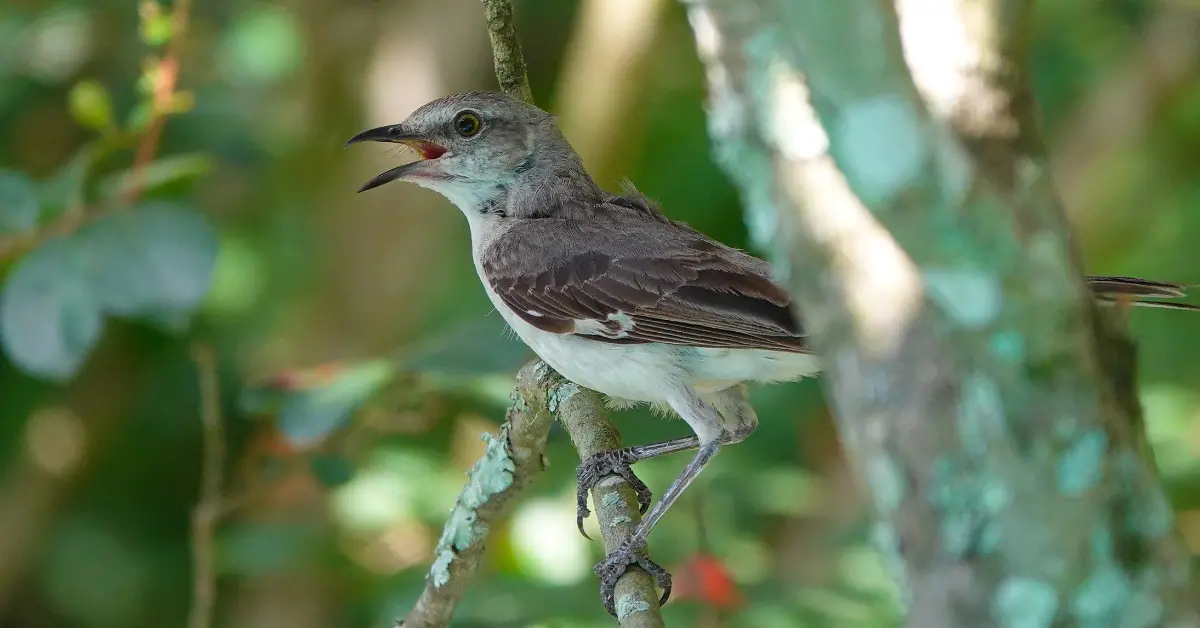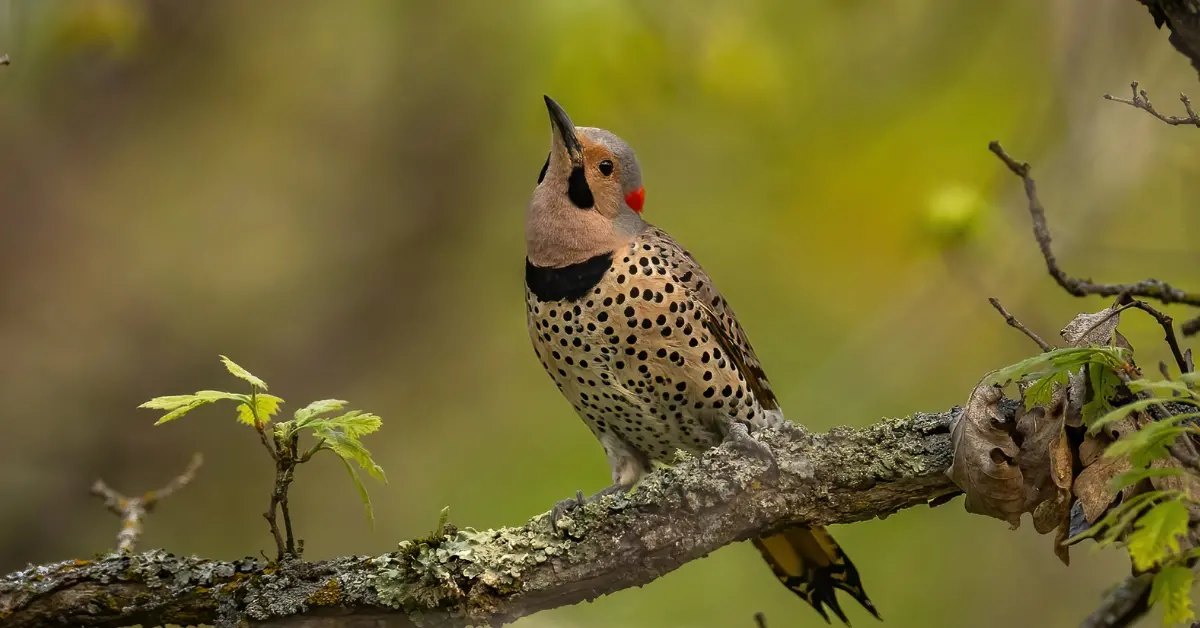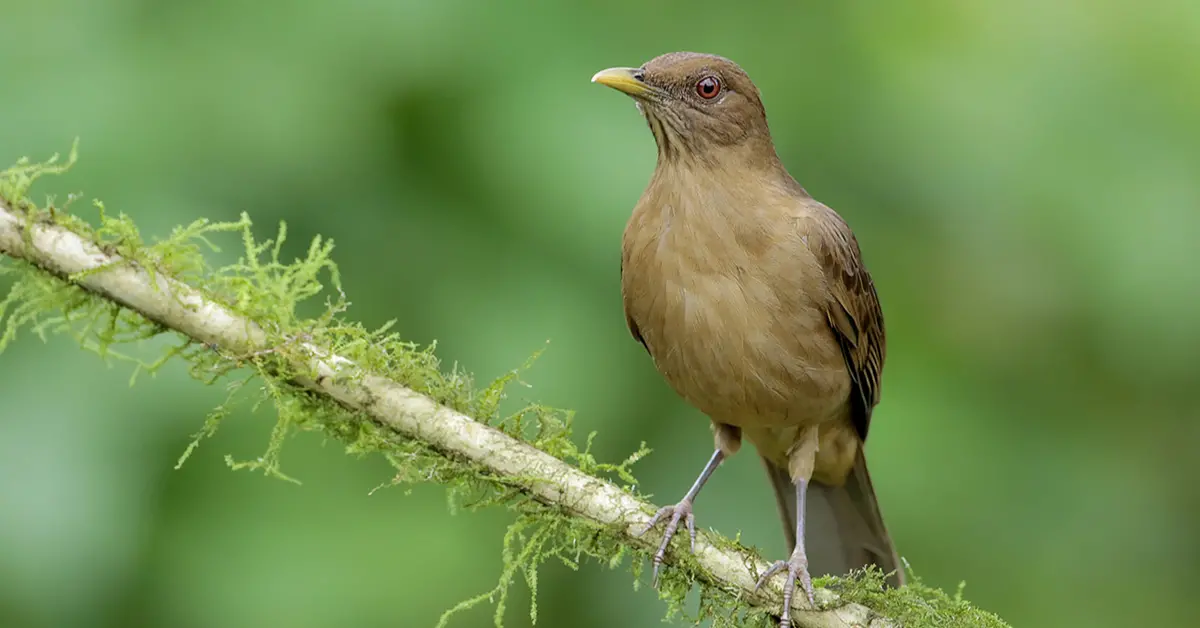Swallows are incredible acrobats in flight. With their impressive swoops and dives, they catch the eye and make you want to follow their adventures through the sky.
But with their fast movements and dainty size, it can be difficult to know which species you’re looking at. There are eight swallow species in North America, and most of them are found throughout the United States and Canada.

In this guide, you’ll meet each of the bird species in this family and learn their range, habitat, and description. That way, you can easily differentiate which of these species you’re watching out in the field. But before we dive into each bird, let’s discuss what makes a swallow a swallow.
Understanding Swallows: An Overview
Swallows belong to the Hirundinidae, or swallow family. While each species is unique in its own way, they also share some key characteristics. To start, these birds are migratory, with many species migrating long distances from the lowlands of South America to Canada. Swallows typically arrive in early to mid-spring and depart in late summer to early fall.
Along with being a migratory bird family, swallows also share a similar body shape. They all have symmetrical, pointed wings in flight and typically have a square to slightly notched tail. They also share the characteristics of small, rounded heads and small, slightly flat beaks that allow them to catch insects in flight.
These birds share similar nesting habits. Almost all North American swallows nest as a colony (except the solitary Northern Rough-winged Swallow). It’s common to see a mixed flock of different swallow species all catching insects out of the air. Essentially, they prefer to be together as a group, whether they’re breeding, nesting, foraging, or migrating.
8 Swallow Species of North America
Now that we’ve covered what unites these birds in the Hirundinidae family, let’s dive into the eight beautiful and unique swallow species of North America.
1. Barn Swallow
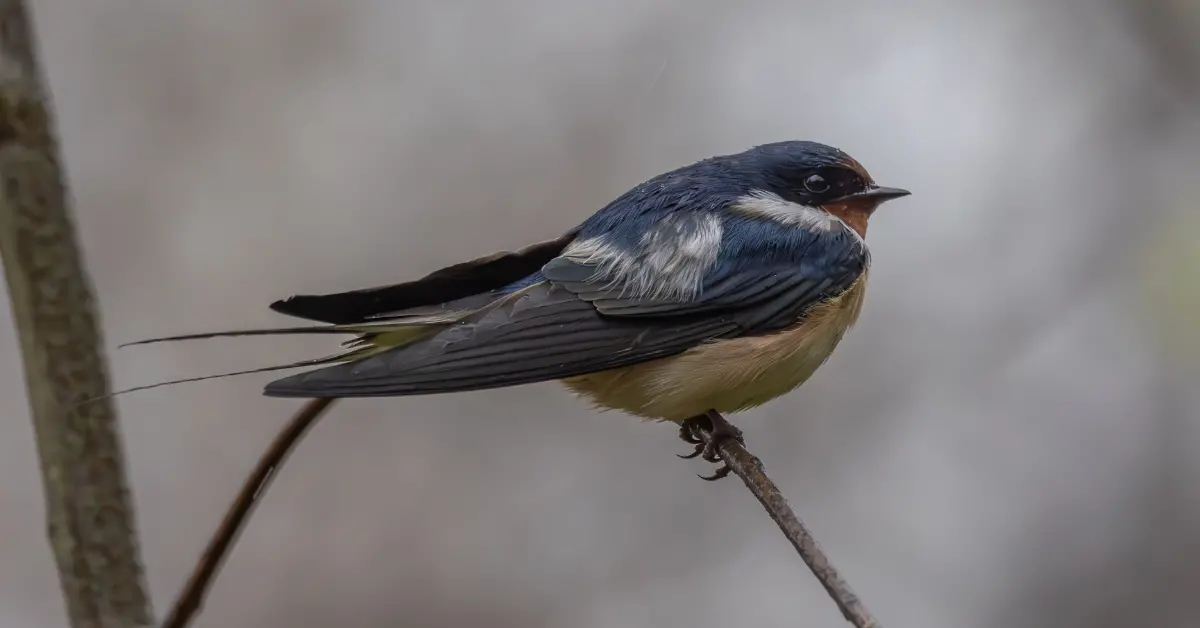
Range: While breeding, the Barn Swallow (Hirundo rustica) is common and abundant across most of the United States and Canada. They rarely breed as far north as Alaska and only migrate (but do not breed) across desert regions of the Southwest.
Habitat: They prefer open land, usually near water, where they can eat insects out of the air. They’re often found around farms, ranches, prairies, fields, meadows, creeks, and cities.
Description: The male of this species is shimmery dark blue above and rusty brown below, with a dark patch around the eye. Their throat is typically darker than their chest and belly. The female is also dark blue above, but paler below. While flying, they display a long, deeply forked tail with a white band. Their unique tail shape sets them apart from other swallows.
2. Tree Swallow

Range: The beautiful Tree Swallow (Tachycineta bicolor)breeds throughout the northern United States and much of Canada. They breed as far north as Alaska and as far south as northern Arizona in the west and West Virginia in the east. In winter, they are found along the East Coast and down into Florida, Mexico, and Central America.
Habitat: This species is often found in open meadows and fields near water. They prefer wetland areas, lakes, rivers, and creeks where they swoop above the water in search of insects.
Description: This bird is distinct with dark, glistening blue-green above and stark white below. They have a thin black mask around their eyes. Their wings are black, and their tail is short and squared, sometimes slightly notched. Juveniles are dusty brown on top and, at a glance, may resemble Bank Swallows. However, the Bank Swallow has a brown band across its chest.
3. Bank Swallow
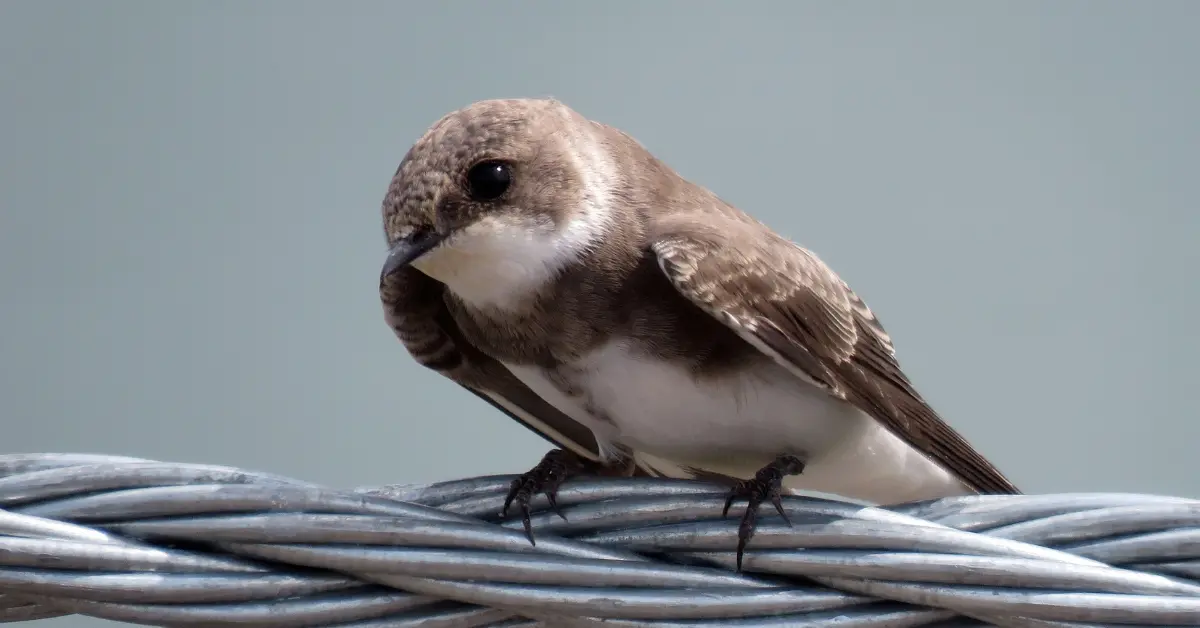
Range: The Bank Swallow (Riparia riparia) migrates in mid-to-late spring to the northern United States and Canada. They breed throughout Canada except for the far north. In the United States, their range extends from western Oregon, down into Colorado, and over to Pennsylvania.
Habitat: Look for these birds in open areas near rivers, creeks, wetlands, ponds, and lakes. As their name suggests, they dig their nests into the steep banks of rivers and lakes. They typically nest in large colonies and are seen flying together low over the water.
Description: This bird is the smallest swallow in North America. They are brown above with a white throat and a brown chest band. Their belly is white. The Northern Rough-winged Swallow is similar; however, they lack the brown chest band. Additionally, the Bank Swallow is a darker brown.
4. Cliff Swallow

Range: Throughout the summer, the Cliff Swallow (Petrochelidon pyrrhonota) breeds across most of the western United States, from Texas up to western Wisconsin. Their northernmost range extends up into Alaska. They are progressively extending their range eastward, with populations now found as far as the Northeastern United States.
Habitat: These birds prefer open to semi-open country near water. They commonly nest under bridges, overpasses, and, as their name suggests, on cliffs under an overhang. Look for a large flock of birds swooping through the air near dome-shaped nests made of mud.
Description: This species has a dark blue back, light cinnamon rump, and tri-colored head. It has a light tan belly, russet throat, dark eye patch, and black cap with a pale forehead patch. They have a light tan collar that is more visible on the back of their neck than on the front. From a distance, they can resemble the Barn Swallow; look for a squared tail and pale rump patch. The Cliff Swallow is also strikingly similar to the Cave Swallow; their differences are noted in the Cave Swallow section below.
5. Violet-green Swallow
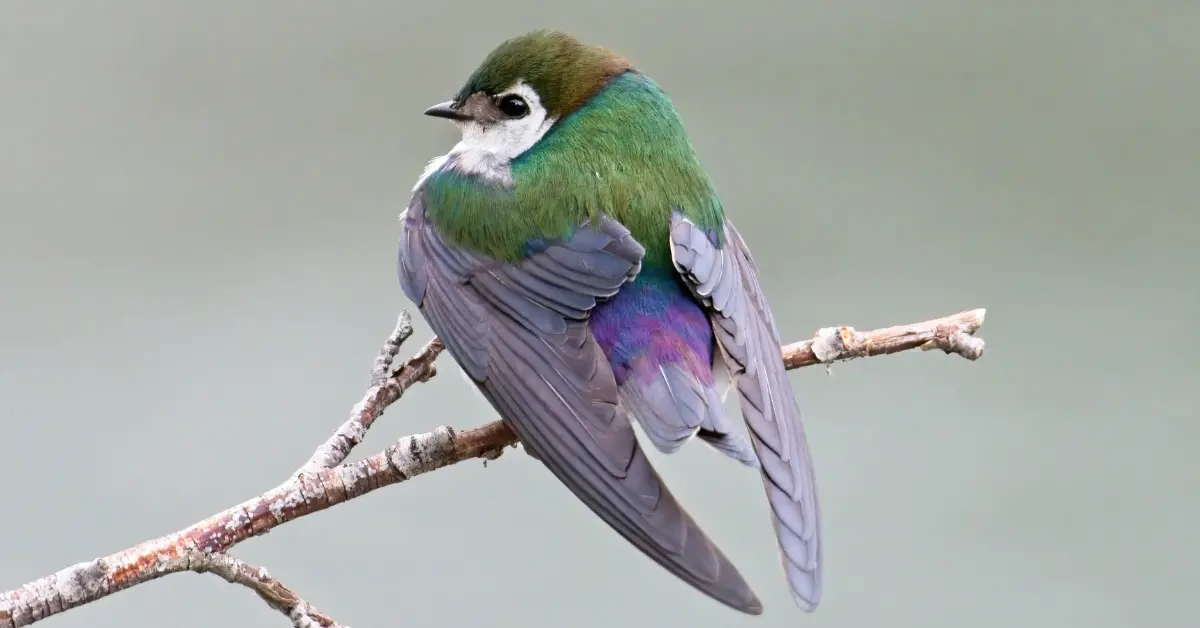
Range: The Violet-green Swallow (Tachycineta thalassina) breeds from California to Arizona, up to Montana, and across western Canada up into Alaska.
Habitat: Look for this beautiful bird in a variety of habitats throughout its range. You can find them in open to semi-open mountainous areas, forests, deserts, cities, and near rivers and lakes. Like the Tree Swallow, they nest in cavities, so they prefer areas with good nesting opportunities.
Description: This stunning bird has a bright green head and back with a snow-white belly and throat. In the right lighting, you can see their violet rump. They can be difficult to differentiate from Tree Swallows from a distance or in poor lighting. Look for the Violet-green’s white cheeks – the Tree Swallow does not have white on its face and has a dark eye patch.
6. Northern Rough-winged Swallow
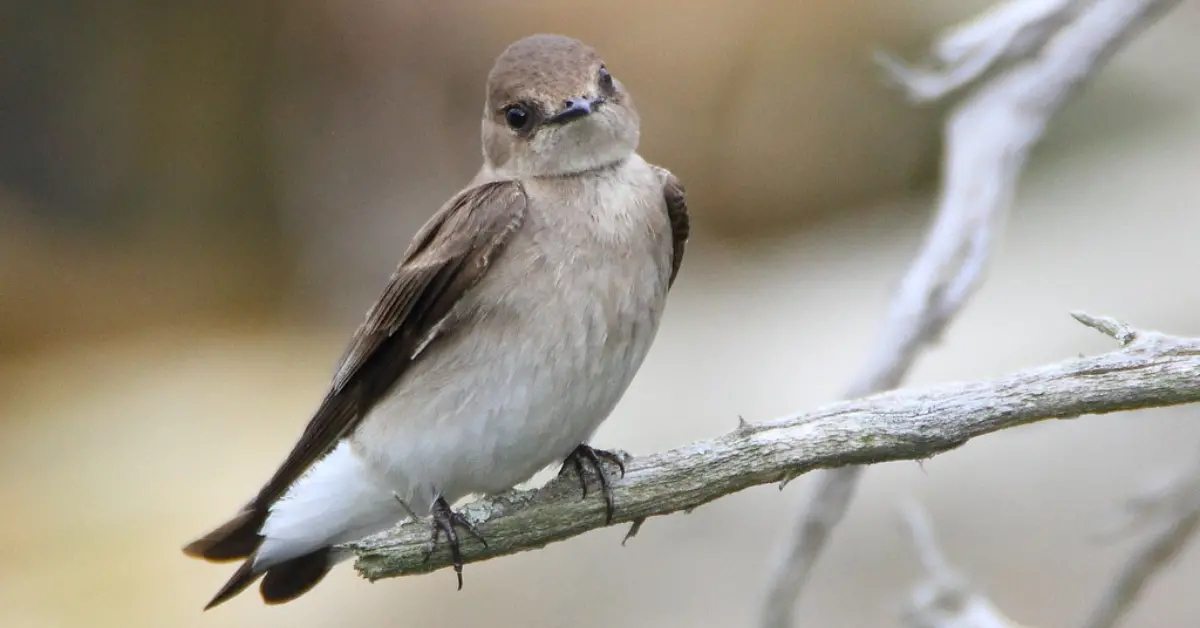
Range: The Northern Rough-winged Swallow (Stelgidopteryx serripennis) breeds across much of the United States and up into southern British Columbia.
Habitat: Like other birds in this family, this species prefers open areas near water where they can forage for flying insects. Look for them around lakes, ponds, wetlands, creeks, and rivers. In desert habitats, you can find them around arroyos.
Description: This species is similar to the Bank Swallow, but is paler overall and lacks the Bank’s distinctive chest band. They are also more solitary than the Bank and are often found alone or with only a few others.
7. Cave Swallow
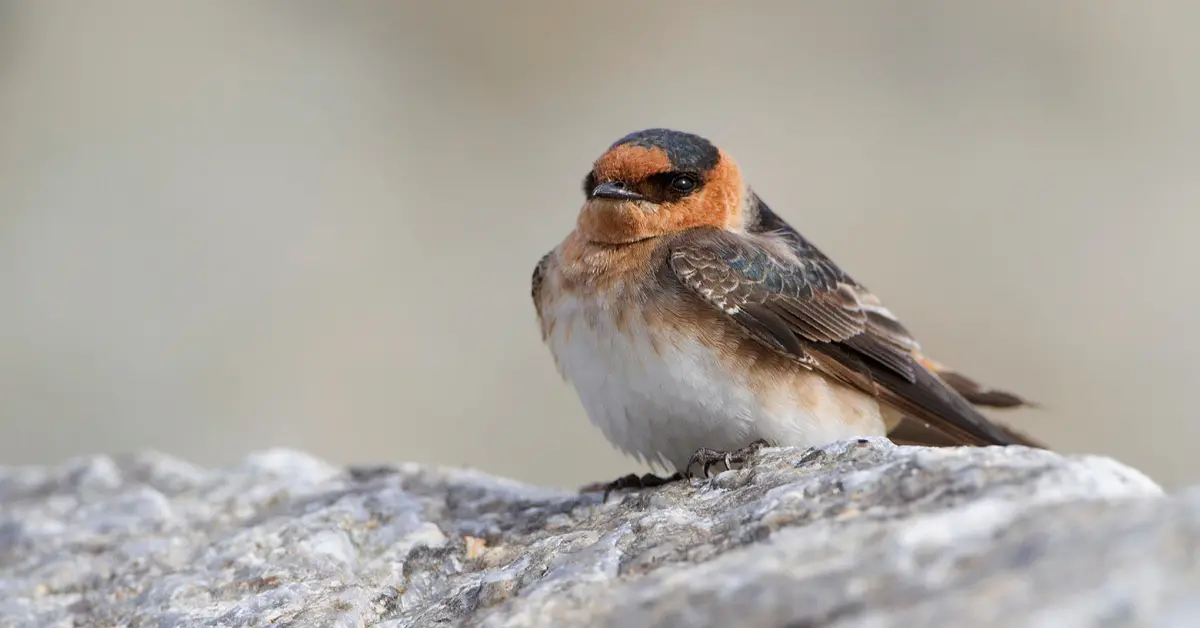
Range: This species has the smallest range of all the swallows and is found in southern Texas, New Mexico, and northern Mexico during the breeding season. There is also a small population in southern Florida.
Habitat: These birds (Petrochelidon fulva) prefer open to semi-open country. You can find them near water and their nest sites, which include caves, bridges, culverts, and buildings. According to All About Birds, “Visiting Carlsbad Caverns in New Mexico is one surefire way to see a Cave Swallow. They nest inside the main cavern, making it easy to watch them fly in and out.”
Description: Because they are closely related, this species looks remarkably similar to the Cliff Swallow. However, the Cave Swallow does not have the pale forehead patch that the Cliff Swallow has. Cliff Swallows also have a darker throat and head and a paler rump. Location and range are also key since Cave Swallows have such a limited range.
8. Purple Martin
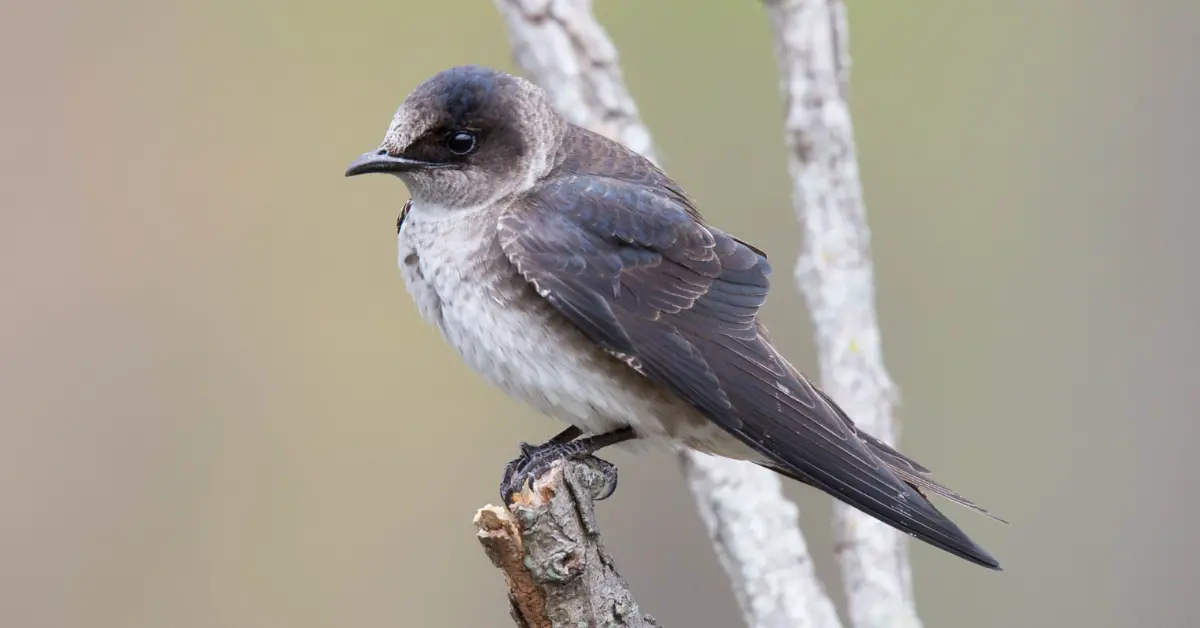
Range: The stunning Purple Martin (Progne subis) breeds throughout the central and eastern United States and up into central Canada. There are also some isolated populations in the Southwest.
Habitat: In the east, Purple Martins have come to depend on human-made, artificial nest boxes. As such, they are typically found wherever nest sites are available, usually close to semi-open areas near water. In the west, they nest in naturally made cavities. You can find them near forest edges and even in the Sonoran Desert of the Southwest.
Description: As the largest swallow in North America, Purple Martins are noticeably bigger than other swallows in flight. The males are dark purple-blue all over, almost appearing black from a distance. The females are dusky brown on top with a speckled tan chest and pale white belly.
Final Thoughts
Swallows are popular for a reason: they are a joy to watch flying in the sky, and their acrobatics are nothing short of impressive. Now, the next time you’re out birding and spot a swallow swooping above, you’ll be able to properly identify which species it is. Just make sure to have a pair of binoculars on hand to get a better look at the bird in question!
How many swallows on this list have you identified? Are there any you hope to see? Tell us about it in the comments below!
Want to learn about more bird species? Check out our guide to flycatchers here.

